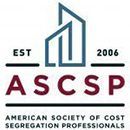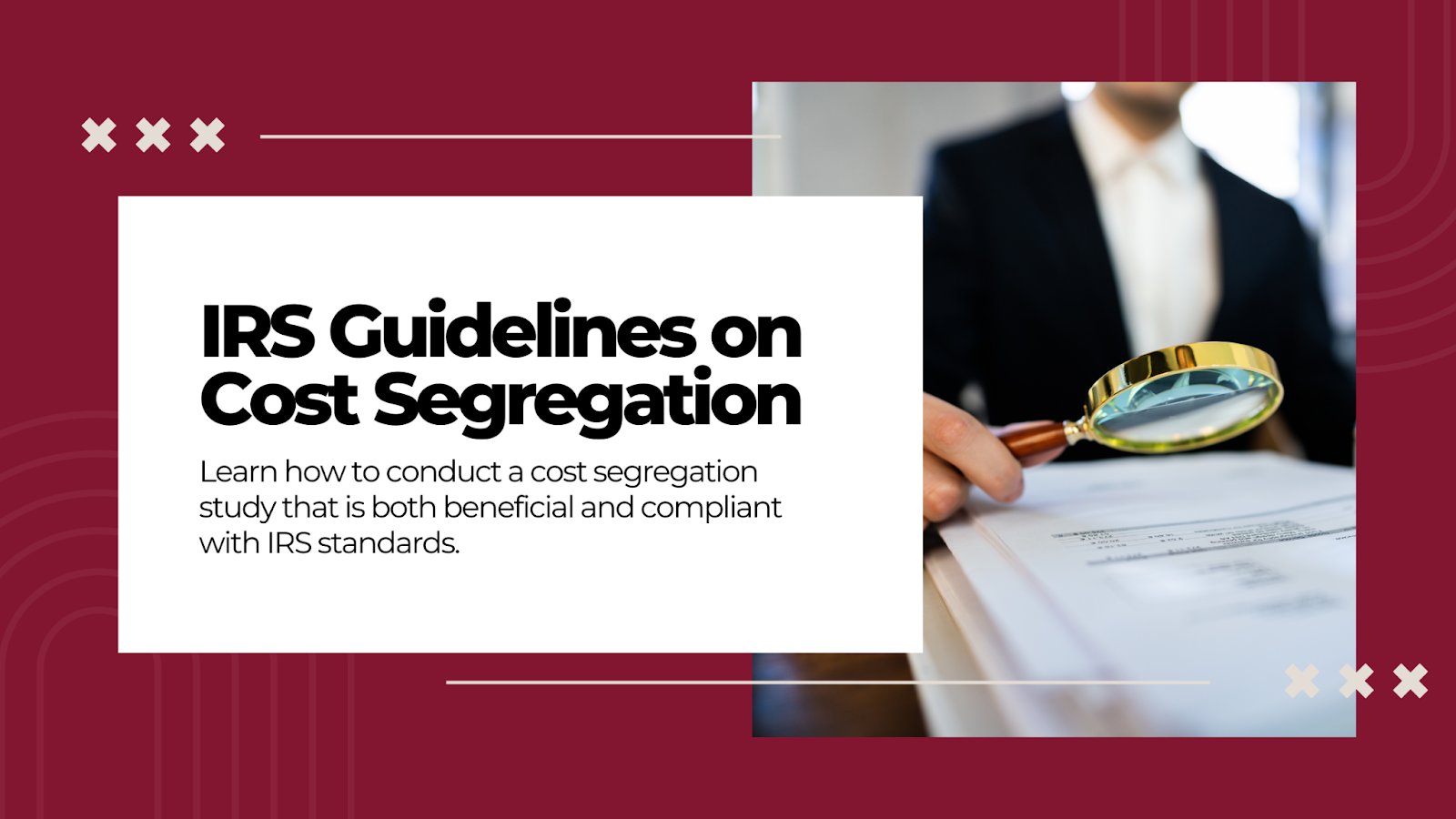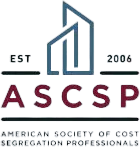Frequently Asked Questions About Cost Segregation

What is Cost Segregation?
Cost segregation is a tax strategy that can significantly enhance the financial health of property owners by accelerating depreciation deductions and reducing taxable income. Despite its numerous benefits, many property owners have questions about how it works, which properties qualify, and what the potential risks are.
In this blog, we will answer the most frequently asked questions about cost segregation, providing you with clear and concise information to help you understand this valuable tax strategy. From understanding the basics to exploring the financial benefits and potential risks, we’ll cover everything you need to know to make informed decisions about implementing cost segregation for your property.
Cost Segregation Definition
Cost segregation is a strategic tax planning tool that allows property owners to accelerate depreciation deductions by reclassifying certain building components. Instead of depreciating the entire property over the standard 27.5 or 39-year period, cost segregation identifies specific assets within the property that can be depreciated over shorter lifespans, such as 5, 7, or 15 years.
The primary purpose of cost segregation is to enhance cash flow by maximizing depreciation deductions in the early years of property ownership. By identifying and reclassifying building components, property owners can significantly reduce their taxable income, leading to immediate tax savings.
BENEFITS FOR PROPERTY OWNERS:
- Increased Cash Flow: Accelerated depreciation deductions reduce taxable income, resulting in more available cash for reinvestment or other uses. ● Tax Savings: By front-loading depreciation deductions, property owners can achieve substantial tax savings in the initial years of ownership.
- Improved Return on Investment: The increased cash flow and tax savings can enhance the overall return on investment for property owners, making cost segregation a valuable financial strategy.
How Does Cost Segregation Work?
Process Overview
Conducting a cost segregation study involves several key steps designed to accurately identify and reclassify building components for accelerated depreciation. Here’s an overview of the process:
- Initial Consultation: The process begins with a preliminary assessment to determine if a cost segregation study will be beneficial for the property owner. This involves reviewing property details, acquisition costs, and potential tax savings.
- Data Collection: Detailed information about the property is gathered, including construction costs, blueprints, engineering plans, and invoices. This data provides the foundation for the subsequent analysis.
- Site Inspection: Engineers visit the property to conduct a thorough inspection. They identify and document the various components and systems within the building, noting their condition and use.
- Component Identification and Classification: The collected data and inspection findings are analyzed to identify which components can be reclassified for shorter depreciation periods. This includes items like HVAC systems, electrical installations, plumbing, and finishes.
- Cost Allocation: Costs are allocated to the identified components based on their respective categories. Engineers and tax professionals use industry standards and specific methodologies to ensure accurate cost allocation.
- Report Preparation: A comprehensive report is prepared, detailing the reclassification of assets, the methodology used, and the resulting depreciation schedules. This report includes all necessary documentation to support the findings.
- Implementation: The findings from the cost segregation study are implemented in the property owner’s tax filings. This may involve adjusting depreciation schedules and amending prior tax returns if applicable.
- Review and Compliance: The final step involves ensuring that all documentation is thorough and compliant with IRS guidelines to prepare for potential audits.
Key Players
Several key professionals are involved in the cost segregation process, each bringing specialized expertise to ensure accurate and compliant results:
- Engineers: Engineers play a critical role in the on-site inspection, component identification, and cost allocation. Their technical expertise ensures that all building components are accurately documented and classified.
- Tax Advisors: Tax advisors provide essential guidance on the tax implications of the reclassified assets. They help interpret IRS guidelines and ensure that the cost segregation study maximizes tax benefits while remaining compliant.
- Accountants: Accountants assist in implementing the study's findings into the property owner’s tax filings. They ensure that depreciation schedules are updated correctly and that any necessary amendments to prior tax returns are made.
- Cost Segregation Specialists: These professionals often oversee the entire process, coordinating the efforts of engineers, tax advisors, and accountants. They ensure that the study is conducted efficiently and effectively, maximizing the financial benefits for the property owner.
By understanding the process and the key players involved, property owners can better appreciate the complexity and value of a cost segregation study, leading to informed decisions and optimized financial outcomes.
What Types of Properties Can Benefit from Cost Segregation?
Eligible Properties
Cost segregation can be applied to a wide range of property types. The primary categories of properties that can benefit from cost segregation include:
- Commercial Properties: Office buildings, retail spaces, shopping centers, hotels, and restaurants.
- Residential Properties: Apartment complexes, rental homes, and multi-family residential buildings.
- Industrial Properties: Manufacturing plants, warehouses, and distribution centers.
- Mixed-Use Properties: Buildings that combine commercial, residential, and/or industrial uses.
- Specialty Properties: Hospitals, medical facilities, sports arenas, and entertainment venues.
Examples
OFFICE BUILDING:
- Situation: A company purchased a new office building for $10 million. ● Outcome: Through a cost segregation study, they identified $2 million worth of assets that could be depreciated over shorter periods (5, 7, and 15 years). This reclassification resulted in significant tax savings, improving their cash flow and overall financial health.
APARTMENT COMPLEX:
- Situation: A real estate investor acquired a 200-unit apartment complex for $15 million.
- Outcome: The cost segregation study revealed that $3.5 million of the property's components, such as flooring, appliances, and landscaping, could be reclassified for accelerated depreciation. This led to substantial tax savings and enhanced the return on investment.
HOTEL:
- Situation: A hospitality group purchased a hotel for $20 million.
- Outcome: By conducting a cost segregation study, they identified $4 million in assets that could be depreciated over shorter periods. This resulted in significant tax savings, allowing the group to reinvest the additional cash flow into property improvements and other business opportunities.
MANUFACTURING PLANT:
- Situation: A manufacturing company built a new plant for $25 million. ● Outcome: The cost segregation study identified $5 million in assets, such as specialized equipment and electrical systems, that qualified for accelerated depreciation. The resulting tax savings provided the company with additional funds to expand its operations and invest in new technologies.
RETAIL SHOPPING CENTER:
- Situation: A developer constructed a retail shopping center for $30 million. ● Outcome: The cost segregation study revealed $6 million worth of assets, including lighting, signage, and parking lot improvements, that could be depreciated over shorter periods. This reclassification led to substantial tax savings and improved the developer's cash flow.
Are There Any Risks or Drawbacks to Cost Segregation?
Potential Risks
While cost segregation offers substantial tax benefits, it is not without potential risks and drawbacks. Property owners should be aware of these risks to make informed decisions.
One of the primary risks associated with cost segregation is the possibility of triggering an IRS audit. The IRS may scrutinize the reclassification of assets to ensure compliance with tax laws and regulations. This increased attention can lead to additional time and resources spent on defending the cost segregation study if not properly conducted and documented.
Conducting a cost segregation study can also involve significant upfront costs, including fees for hiring engineers, tax advisors, and other professionals. For smaller properties, these costs may outweigh the potential tax benefits, making it crucial to weigh the expected savings against the initial investment.
The process of cost segregation is inherently complex and requires detailed analysis and documentation. Property owners who lack experience or expertise in this area may find it challenging to navigate the intricacies of the study. This complexity necessitates the involvement of specialized professionals to ensure accuracy and compliance.
Additionally, there is the potential for misclassification of assets. Inaccurate classification can lead to disallowed deductions, penalties, and interest charges if the IRS determines that the study was not conducted correctly. Ensuring precise and correct classification is essential to avoid these negative outcomes.
Mitigation Strategies
Ensuring that all aspects of the cost segregation study are meticulously documented is critical. This includes maintaining detailed records of the property, construction costs, blueprints, engineering assessments, and the methodology used for reclassification. Keeping all supporting documents organized and easily accessible is vital in case of an IRS audit.
Engaging experienced and qualified professionals, such as engineers, tax advisors, and cost segregation specialists, to conduct the study can significantly reduce risks. Their expertise ensures accuracy, compliance, and defensible results. Verifying the credentials and track record of the professionals you hire is crucial to ensure they have a proven history of successful cost segregation studies.
Using a detailed engineering approach rather than a rule-of-thumb method is another important strategy. This approach involves a comprehensive analysis of the property and its components, leading to more accurate and defensible reclassification. Insisting on a site inspection and a thorough review of construction documents by the engineering team can enhance the accuracy of the study.
Staying informed about the latest IRS guidelines and best practices for cost segregation is essential to ensure compliance and minimize the risk of audit. Regularly consulting with your tax advisor to review and update your cost segregation practices in line with current IRS regulations is a proactive approach to maintaining compliance.
Periodically reviewing the classifications and documentation to ensure they remain accurate and compliant with any changes in IRS regulations or property use is also important. Scheduling annual reviews with your tax advisor and cost segregation specialist can help maintain compliance and optimize tax benefits.
Take Action with Cost Segregation
If you own a property and are looking to optimize your tax strategy, consider conducting a cost segregation study. The potential tax savings and improved cash flow can provide a strong return on investment. To ensure the study is done accurately and compliantly, consult with qualified professionals who have the expertise and experience in cost segregation.
Find a Qualified Professional
The ASCSP is home to a directory of certified cost segregation professionals who adhere to the highest standards of practice. By visiting the ASCSP's directory, you can find a qualified professional in your area who can guide you through the process and help you reap the full financial benefits of cost segregation.
Learn More About Cost Segregation
The American Society of Cost Segregation Professionals (ASCSP) offers a network of qualified professionals who specialize in these studies. ASCSP members adhere to a high standard of practice and are equipped with the latest insights and methodologies in cost segregation.
We encourage you to reach out to a member of the ASCSP to discuss how a cost segregation study can benefit your specific property scenario. Whether you are new to property investment or looking to optimize your current assets, cost segregation professionals can provide the expertise you need to make informed decisions and achieve substantial financial gains!
Visit the American Society of Cost Segregation Professionals (ASCSP) website to access our information and resources that can provide you with a thorough understanding of cost segregation and its advantages.



